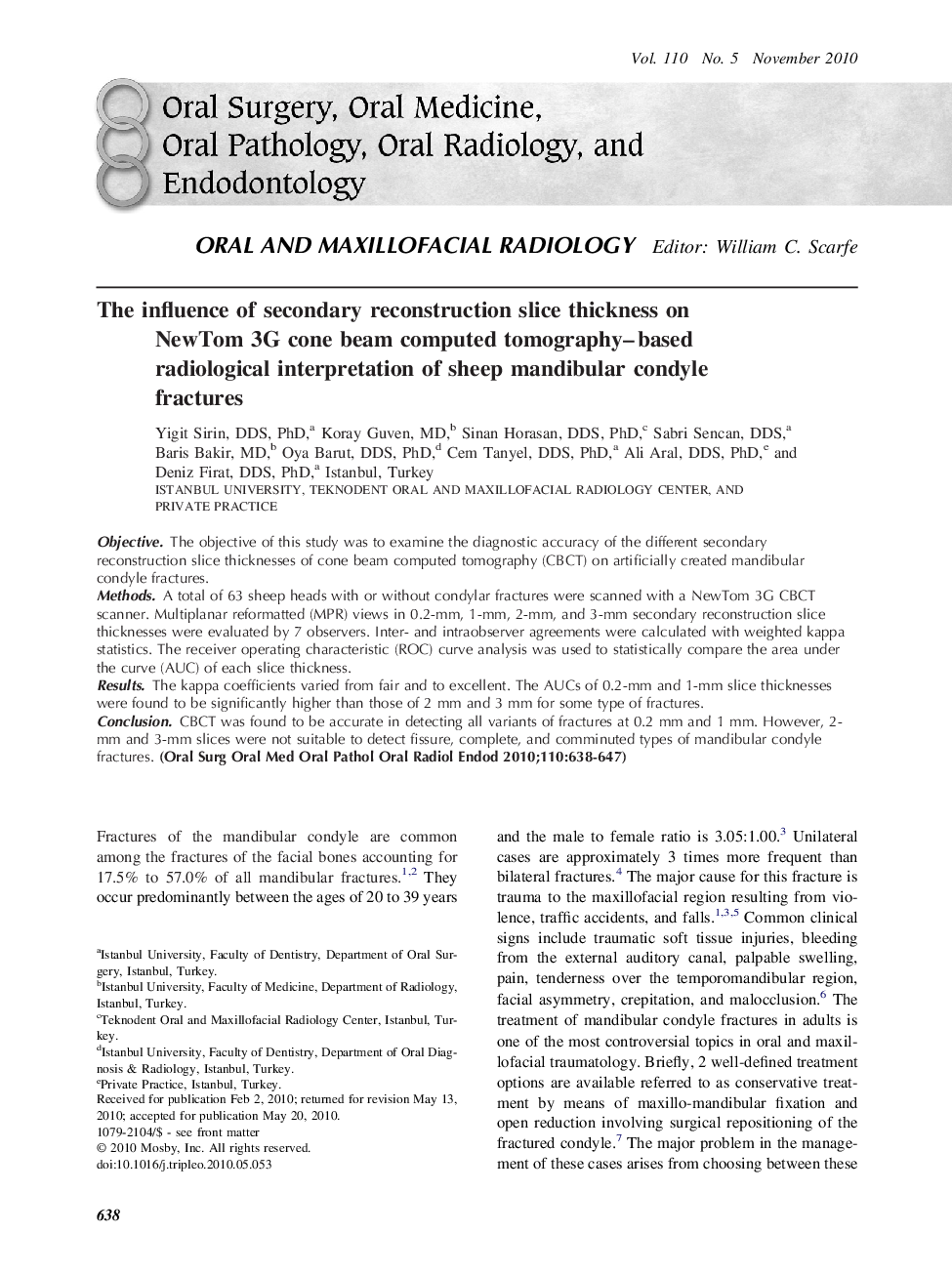| Article ID | Journal | Published Year | Pages | File Type |
|---|---|---|---|---|
| 3167466 | Oral Surgery, Oral Medicine, Oral Pathology, Oral Radiology, and Endodontology | 2010 | 10 Pages |
ObjectiveThe objective of this study was to examine the diagnostic accuracy of the different secondary reconstruction slice thicknesses of cone beam computed tomography (CBCT) on artificially created mandibular condyle fractures.MethodsA total of 63 sheep heads with or without condylar fractures were scanned with a NewTom 3G CBCT scanner. Multiplanar reformatted (MPR) views in 0.2-mm, 1-mm, 2-mm, and 3-mm secondary reconstruction slice thicknesses were evaluated by 7 observers. Inter- and intraobserver agreements were calculated with weighted kappa statistics. The receiver operating characteristic (ROC) curve analysis was used to statistically compare the area under the curve (AUC) of each slice thickness.ResultsThe kappa coefficients varied from fair and to excellent. The AUCs of 0.2-mm and 1-mm slice thicknesses were found to be significantly higher than those of 2 mm and 3 mm for some type of fractures.ConclusionCBCT was found to be accurate in detecting all variants of fractures at 0.2 mm and 1 mm. However, 2-mm and 3-mm slices were not suitable to detect fissure, complete, and comminuted types of mandibular condyle fractures.
